
Ocean Infinity’s Hunt for the Submarine San Juan
in. Since the firm started operating in 2016, disrupting the autonomous underwater vehicle (AUV) space by deploying multiple AUVs from one vessel on search or survey missions, the company has made a name for itself in a number of international search efforts.Ocean Infinity committed to conduct the search operation for up to 60 days and to covers its cost, unless the submarine was found. It deployed its Seabed Constructor vessel with five Hugins. The initial 10-12 days covered three, what were thought key, search areas. But the submarine wasn’t found. “We went back and brought in more experts
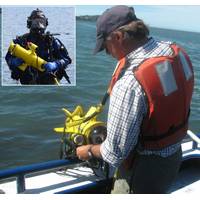
Underwater Video Aids Scientists and Search Teams
advantages of having a system that sends live video to the surface. Many law enforcement agencies and public safety dive teams put down a camera instead of a diver in the initial stages of an underwater search to save time and increase safety. They can make a permanent record of a dive site, search operation, underwater crime scene, or evidence. These video systems also help scientists study the health of the aquatic environment and its marine inhabitants. One agency utilizing the underwater video system is the National Oceanic and Atmospheric Administration (NOAA) Office of Coastal Management
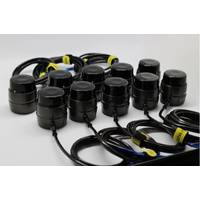
New Scanning Sonar for Tetis ROVs
in the delivery, EofE ultrasonics said, "We are delighted that Tetis decided to have Echologger scanning sonar for their ROVs after intensive testings and comparisons. It demonstrates that performance and compactness of the device are outstanding and just suitable for navigation and search operation of the vehicles. MRS900 is optimally design for underwater vehicles with high scanning speed and high resolution images. We believe more underwater vehicles will adopt our high resolution scanning sonar RS900 as well as MRS900 for outstanding performance and competitive prices."
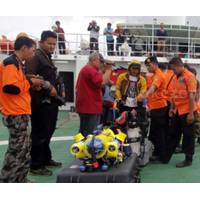
ROVs Aid Recovery Efforts at Air Asia Crash Site
;s national search and rescue agency, Basarnas, who is getting assistance from teams in Singapore, Malaysia and Australia. Basarnas recently acquired several of JW Fishers ROVs and side scan sonars, along with diver-held video systems; essential pieces of equipment for this type of underwater search operation. One of the first instruments to arrive on site was a side scan sonar, which was able to confirm pieces of the aircraft were scattered on the seafloor. ROVs were the next to be deployed. The remote controlled underwater camera systems can stay submerged all day and all night, without any concern
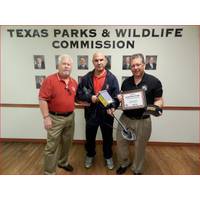
BMF Project: Making a Difference in the Lives of Others
in less than 30 minutes, but despite an exhaustive search involving agencies from across the state, it took more than a month to locate the baby’s body. Rescue workers came to know Kristie Brown, mother of the baby, and other family members as they were always on site during the long, arduous search operation doing whatever they could to help. The family heard firsthand about the difficult and dangerous conditions as divers groped along the bottom in near zero visibility. Team members of the Knoxville Emergency Rescue Squad explained the technology existed to perform this type of search operation
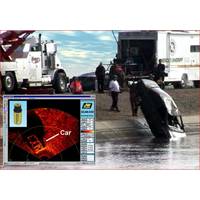
Scanning Sonar for Search and Survey
notified and the Winona County Dive Team dispatched. Two bodies were quickly recovered from the vehicle, both wearing seatbelts, but two others were missing. The third victim was found the next day, but the fourth could not be located. Frigid water and limited visibility made a large scale search operation with divers nearly impossible. A decision was made to call in nearby Washington County Sheriff’s Department and their underwater robot. Two years earlier the department had acquired JW Fishers SeaOtter-2 ROV which has two cameras, four powerful thrusters and a SCAN-650 scanning sonar.
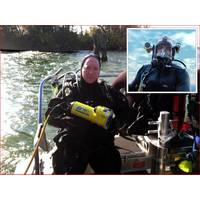
Underwater Cameras Help Police and Commercial Divers
that can send live video topside for support personnel to see. Many law enforcement agencies and public safety dive teams put down a camera instead of a diver in the initial stages of an underwater search to save time and increase safety. It also allows them to make a permanent record of a search operation, an underwater crime scene, or evidence. Commercial diving companies employ these systems so topside staff can see what the diver is doing and also to produce a record of the work being done for their client. The Tonawanda New York Sheriffs Department is one of the many agencies using this
Humminbird Side Imaging Sonar Training DVD Released
skills to operate. The Humminbird system provides an easier, low-cost alternative, especially in low visibility conditions, plus it covers a wide swath area with good resolution and can locate bottom structures, automobiles, boats and drowning victims. It is now considered a staple of shallow water search operations. The new DVD covers how to set up and operate the unit, understand and interpret imagery, plan and execute a search operation and how to dive the target. "While no DVD replaces field training, this provides a strong, in-depth foundation of knowledge for any aquatic search and rescue
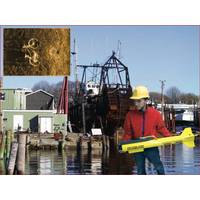
New JW Fishers HF Side Scan Sonar
one fish provides tremendous versatility allowing the operator to switch between frequencies at any time during operation. The lower frequency is capable of scanning long ranges, but with less resolution. High frequency has a shorter scan range, but produces highly detailed images. In a typical search operation an initial scan is done with the low frequency. When a potential target is located, the operator switches to the high frequency and makes a closer pass yielding an exact identification of the object. The two frequencies available for coupling with the 1200 kHz in a dual frequency system



 February 2024
February 2024





